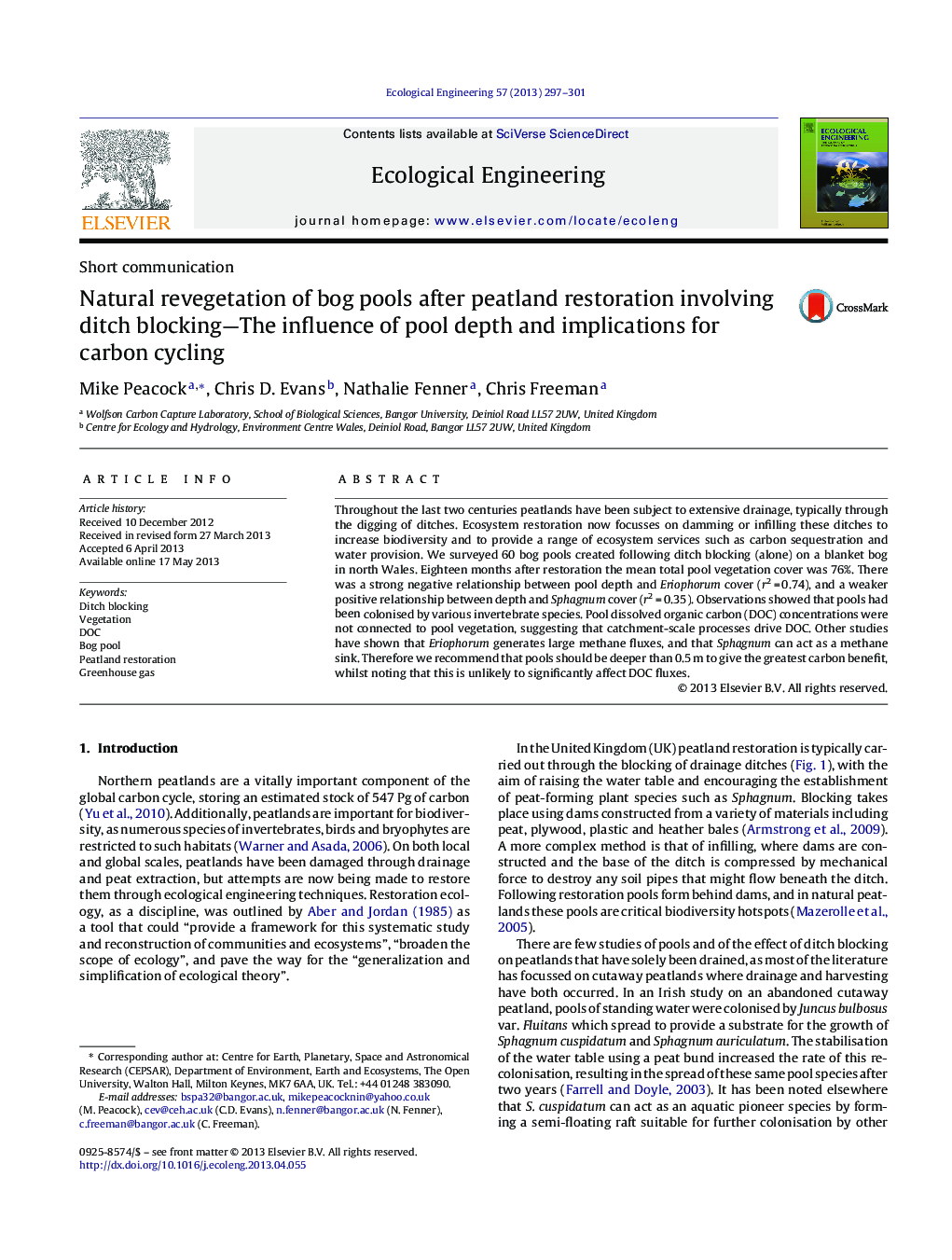| Article ID | Journal | Published Year | Pages | File Type |
|---|---|---|---|---|
| 6302629 | Ecological Engineering | 2013 | 5 Pages |
Abstract
Throughout the last two centuries peatlands have been subject to extensive drainage, typically through the digging of ditches. Ecosystem restoration now focusses on damming or infilling these ditches to increase biodiversity and to provide a range of ecosystem services such as carbon sequestration and water provision. We surveyed 60 bog pools created following ditch blocking (alone) on a blanket bog in north Wales. Eighteen months after restoration the mean total pool vegetation cover was 76%. There was a strong negative relationship between pool depth and Eriophorum cover (r2Â =Â 0.74), and a weaker positive relationship between depth and Sphagnum cover (r2Â =Â 0.35). Observations showed that pools had been colonised by various invertebrate species. Pool dissolved organic carbon (DOC) concentrations were not connected to pool vegetation, suggesting that catchment-scale processes drive DOC. Other studies have shown that Eriophorum generates large methane fluxes, and that Sphagnum can act as a methane sink. Therefore we recommend that pools should be deeper than 0.5Â m to give the greatest carbon benefit, whilst noting that this is unlikely to significantly affect DOC fluxes.
Related Topics
Life Sciences
Agricultural and Biological Sciences
Ecology, Evolution, Behavior and Systematics
Authors
Mike Peacock, Chris D. Evans, Nathalie Fenner, Chris Freeman,
